Copyright © 2025 Motivate Media Group. All rights reserved.
Flavie Audis’ first solo show of collectible design poses questions around Earth’s resources
Terra (In)firma was showcased at Milan's famed Nilufar Gallery
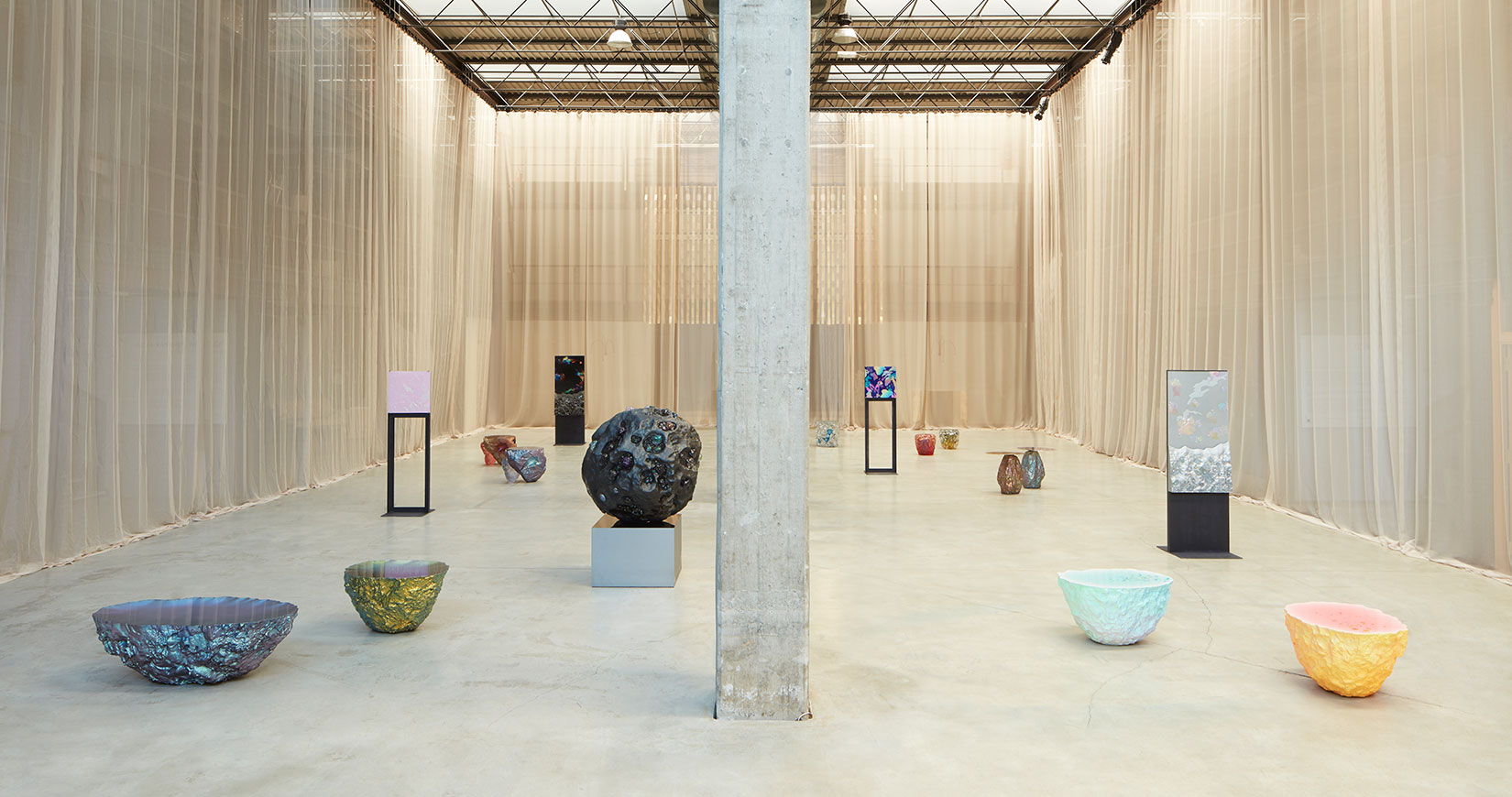
Lebanese-French artist Flavie Audi’s first solo show at Italian gallery Nilufar is Terra (In)firma, which imagines a post-human topography where interplays of real and virtual, natural and synthetic and fluid and solid combine to pose questions surrounding the Earth’s resources, human interventions and technology. identity speaks to Audi to learn more.
How did the ideas behind this exhibition develop?
The show at Nilufar reveals the delicate, vulnerable and unstable state of our territory due to the over-abusive exploration of the planet, and questions our position within the Anthropocene. Terra (In)firma seeks to destabilise our encounter with the terrestrial and imagines a post-human topography. Rocks, symbols of solidity, become disorientating with the fluctuation of light due to their iridescent and reflecting surfaces. In navigating this uncanny plain, we encounter fragments of hyper-liths dispersed through space, rupturing our sense of stability. Rocks become fluid, tilting on their axes, conglomerating. Forms caress and nudge each other in tender relations. Digital aesthetics warp our sense of material nature, hybridising the organic and synthetic. Ultimately, Terra (In)firma confronts us with the Promethean dilemma; should the Earth be treated as a resource whose utility is determined primarily by human needs? Can human technology overcome our environmental problems? Terra (In)firma not only evokes the vulnerable and unstable state of the planet, but also the contradictions of our dual dependency on nature and technology, with its ongoing battle between the physical and digital worlds.
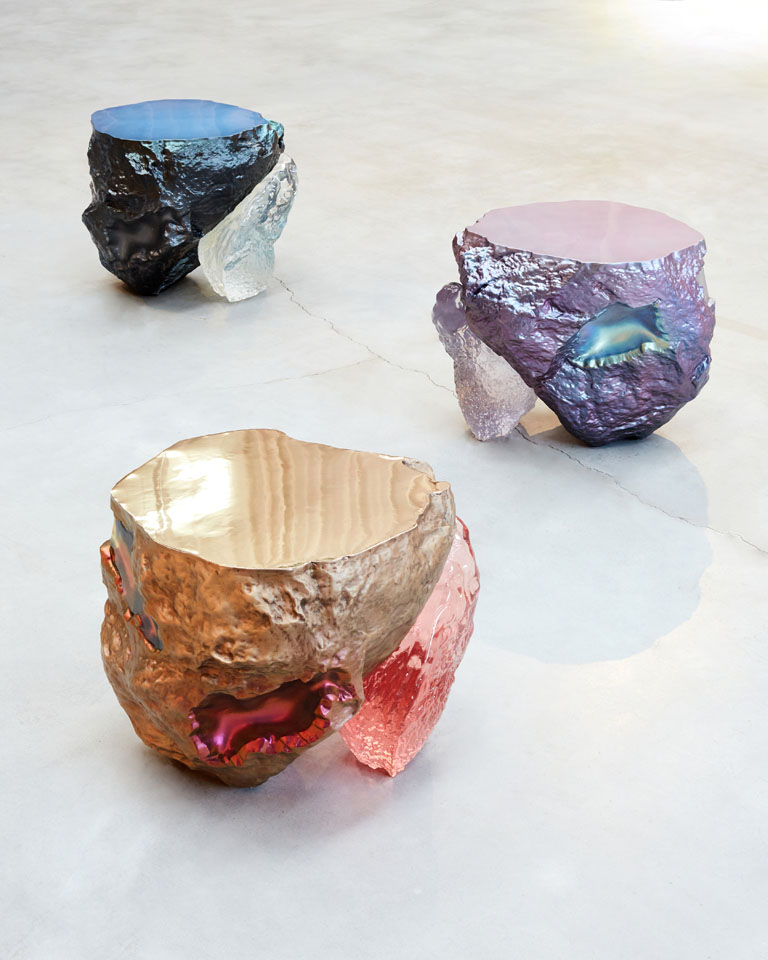
How are the pieces produced? What materials do you predominantly work with?
All the works are fabricated in various workshops across the UK. Technically, it starts with digital modelling, then CNC and 3D printing of shapes and tools, and going through the manual process of moulding and casting. Depending on the type of cast material, the surface will be polished, or spray-painted and then lacquered. The spray work is done by hand. I experiment with pigments and surface effects to echo a certain digital aesthetic. Often, happy accidents and experimental discoveries reshuffle the choreography of the process.
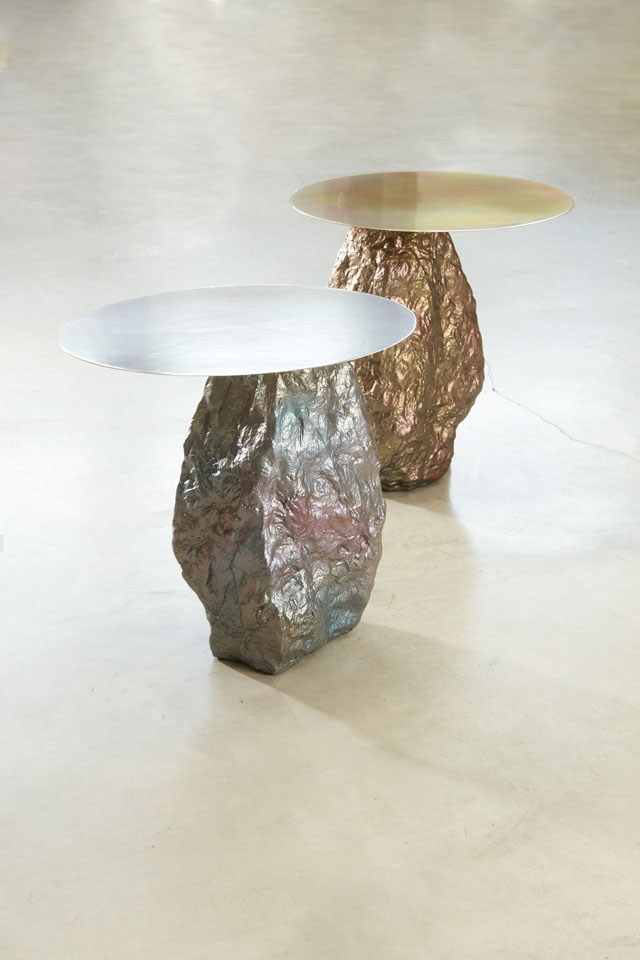
My interest lies in the combinations and alliances of digital techniques with craftsmanship. What fascinates me the most is not the traditions, technologies and conceptual concerns themselves – but how these different influences are linked together.

For Nilufar’s solo show, I have Iayered several surfacing processes. The bridging of diverse digital techniques with traditional craftsmanship reveals a certain ambiguity. The man-made and the industrial robotic manufacturing processes are blurred. The work looks earthy, naturally aquatic and digitally rendered – all at the same time. I strive to keep a certain mystery behind the works. In the show at Nilufar, there was no predominant material. Pieces are in bronze, resin, steel, silver, fibreglass, glass, paint.
Can you talk about the significant choice of colour in the pieces?
The significant choice was the use of iridescent colours. Throughout the show, there is the recurring use of iridescence on surfaces. We live in an era of iridescence, in constant oscillation between physical and virtual, never fully in the physical and never fully in the virtual. We are shifting between the realms, in the same way colours are shifting on an iridescent surface. I manipulate colours so they appear formless and in a continuous state of flux, suggesting indeterminacy and limitlessness. Iridescent pigments are shapeshifters and never static, as they transform with each changing position of the viewer’s body.
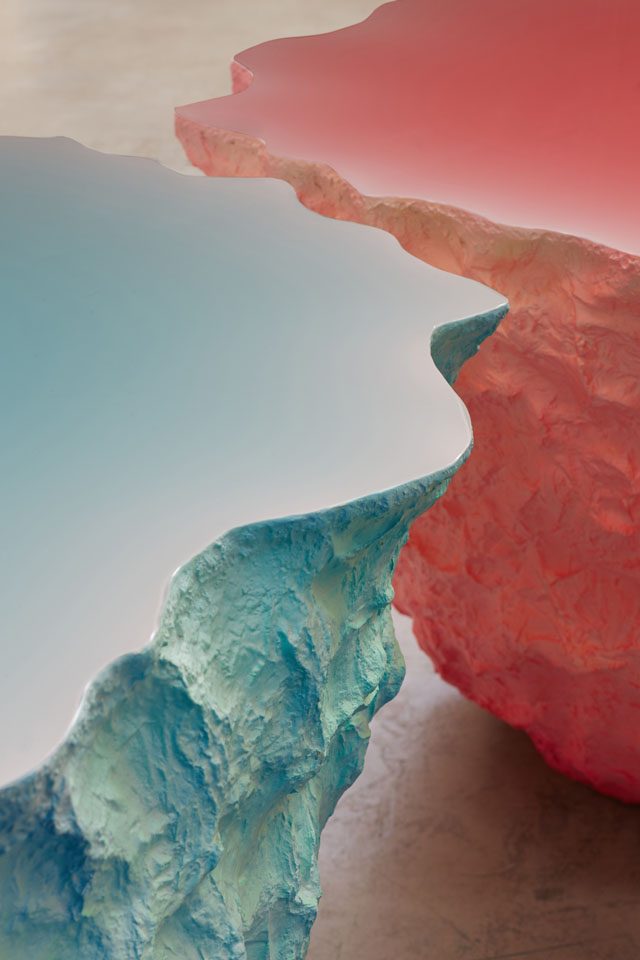
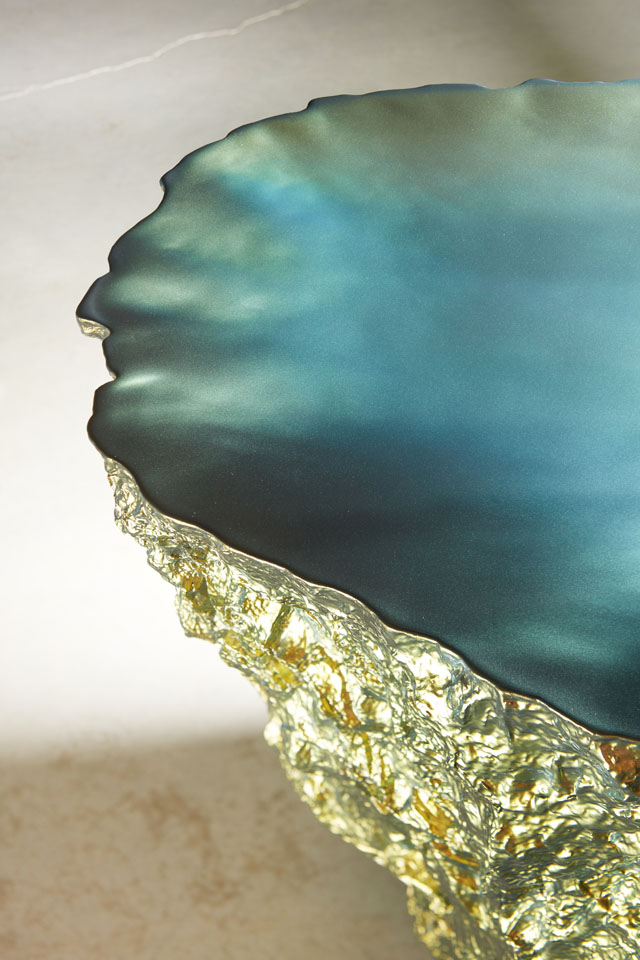
What inspires your work?
I am often guided by an adoration for a sense of wonder with the world, and inspired by the spiritual significance of landscape fragments such as gongshi, suseiki and Japanese rock gardens. At the moment I am particularly inspired by Hydrofeminism theories, solidarity between watery bodies. My inspiration comes from an accumulation of material experiments and explorations of digital modelling and fabrication techniques. The digital tools we have today are so powerful in shaping our reality, and I think about their potential to create new forms and attribute new behaviours to future geologies and landscapes. How can these tools be a catalyst for new contemporary aesthetics?
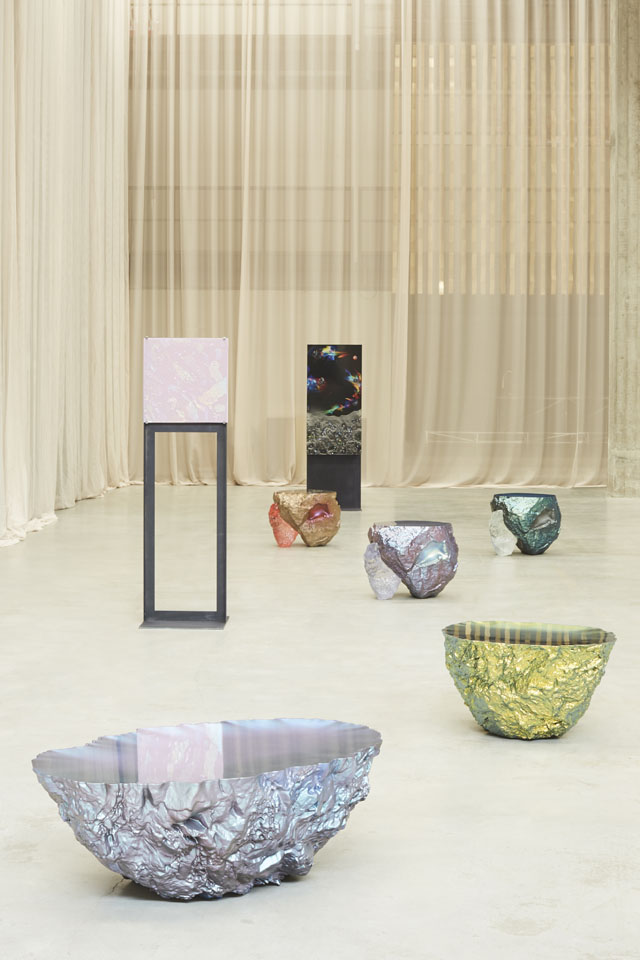
Photography by Mattia Iotti
The Latest
Textures That Transform
Aura Living’s AW24 collection showcases the elegance of contrast and harmony
Form Meets Function
Laufen prioritises design, functionality and sustainability in its latest collections
Preserving Culture, Inspiring Creativity
Discover the Legacy of a Saudi Art Space: Prince Faisal bin Fahd Arts Hall explores the Hall’s enduring influence on the cultural fabric of Saudi Arabia
Channelling the Dada Spirit
Free-spirited and creative, The Home Hotel in Zurich injects a sense of whimsy into a former paper factory
id Most Wanted- January 2025
Falaj Collection by Aljoud Lootah Design
Things to Covet in January
identity selects warm-toned furniture pieces and objets that align with Pantone’s colour of the year
Shaping the Future of Workspaces by MillerKnoll
Stacy Stewart, Regional Director Middle East & Africa of MillerKnoll discusses the future and evolution of design in workspaces with identity.
Shaping Urban Transformation
Gensler’s Design Forecast Report 2025 identifies the top global design trends that will impact the real estate and built environment this year
Unveiling Attainable Luxury
Kamdar Developments has launched 105 Residences, a new high-end development in Jumeirah Village Circle.
The Muse
Located in the heart of Jumeirah Garden City, formerly known as ‘New Satwa’, The Muse adds to the urban fabric of the area
Cultural Immersion Meets Refined Luxury
The Chedi Hegra opens its doors in AlUla’s UNESCO World Heritage Site
Redefining Coastal Luxury
Sunshine Bay on Al Marjan island combines seaside views, exceptional design, and world-class amenities to create a unique waterfront haven
















